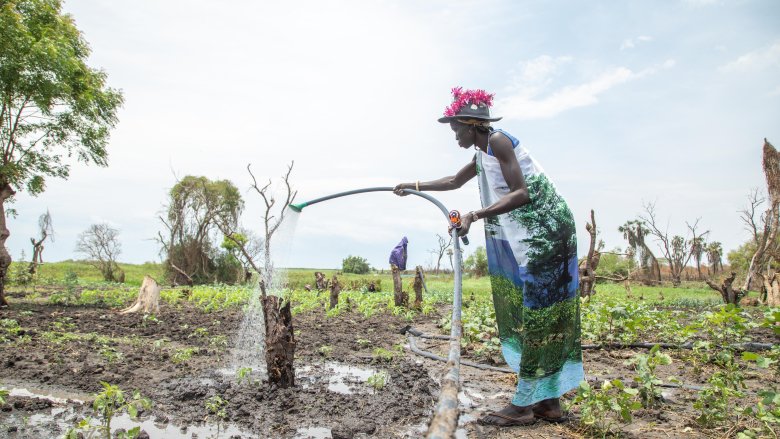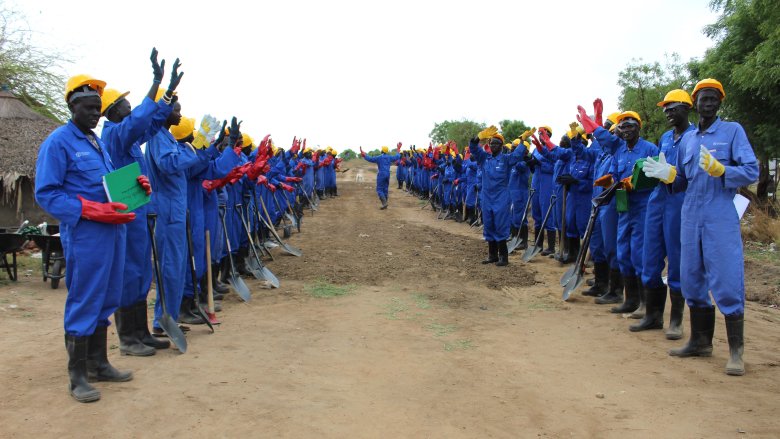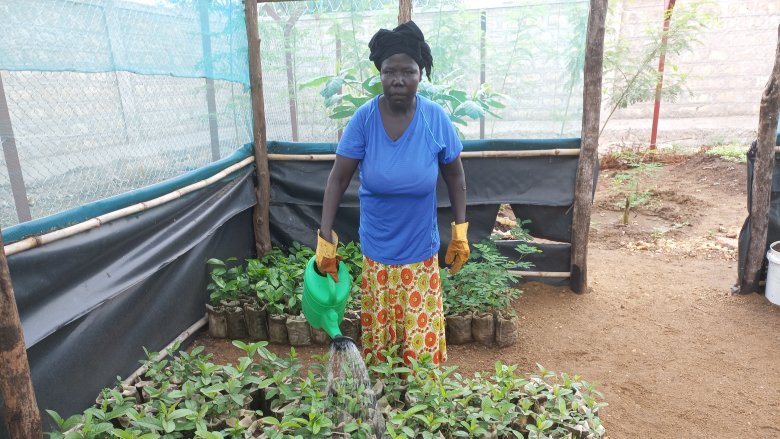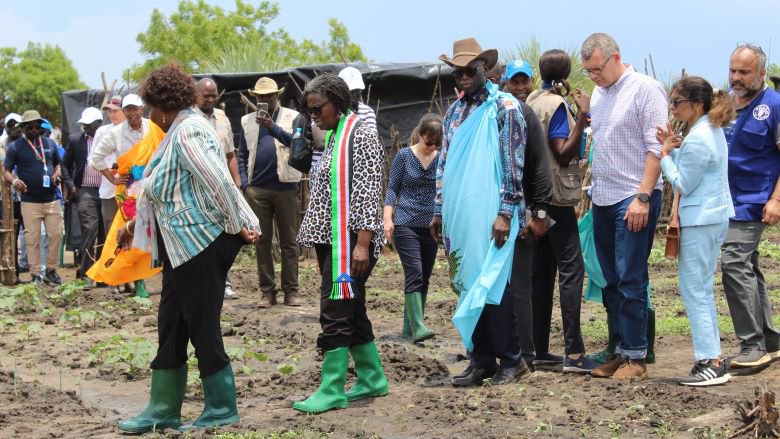JUBA, December 22, 2023- In South Sudan, multiple shocks such as food insecurity, excessive floods, economic volatility, and sub-national conflict continue to affect the livelihoods of vulnerable communities. But some communities can see a ray of hope and a chance to transform their livelihoods. Amid growing poverty and food insecurity in South Sudan, the Resilient Agricultural Livelihoods Project (RALP) and Emergency Locust Response Project (ELRP) are addressing immediate and long term development needs.
Both projects focus on strengthening the capacity of farmers and their organizations with emphasis on improving agricultural productivity through promoting knowledge, skills, access to inputs and other solutions for enhancing agricultural production and resilience.
The Resilient Agricultural Livelihoods Project (RALP)
Achol Akueth Deng, age 45, is one of the beneficiaries of RALP. According to Achol, a resident of Kolnyang Payam in Bor County, and a member of the Tuidu farmers’ group, the project has improved her life and that of her family.
“With the support we received from the project, I am now living a happy life since I started growing some vegetables for household consumption and selling the excess for money to buy some basic needs for my family and to pay the school fees of my children,” recounted Achol.
Sowila Mangu Ali, age 38, a mother of five children, is a progressive farmer and a member of the Momoi Seed Production for Market Cooperative in Wau County. She is among those benefiting from foundation seeds provided by the RALP Project.
“With the seeds we are producing, farmers will be ready to cultivate large farms/lands and plant crops and vegetables in both dry and main seasons at the right time and produce larger quantities for both home consumption and markets because there is a ready market,” Sowila said.
Some of the results from the project so far include:
- Provision of climate-smart agricultural inputs (seeds, maize, sorghum, groundnuts, cowpeas, vegetables) and technology to increase production to 52,224 farming households facing acute food insecurity (33,595 female and 18,629 male).
- Support to 281 farmer’s groups of 8,813 farmers (4,035 females and 4,778 males), trained them on extension methodologies and communication skills, climate-smart agriculture, tree planting and agroforestry, and seed production.
- Decentralized training of farmers with 191 farmers’ garden demonstration plots developed.
- Enrollment of 72 farmer groups with a total membership of 2,187 individuals (1,014 females and 1,173 males) in tree planting and agroforestry activities.
- 1,700 households (1,065 female and 635 males) received small ruminants.
- Formation of 63 seed producer groups of 1,890 members (1,346 females and 544 males) and support to reduce dependency on imported seeds.
The Emergency Locust Response Project (ELRP)
On the other hand, the Emergency Locust Response Project focuses on responding to threats posed by the desert locust outbreak, protecting, and restoring livelihoods and food security, and strengthening systems for preparedness. The project supports a total of 184,176 vulnerable households in nine counties in the five states of Eastern Equatoria, Central Equatoria, Jonglei, Northern Bahr el Ghazal, and Northern Bahr el Ghazal.
Awel Borong Deng, a 45-year-old woman with six children is among the Labour-Intensive Public Works (LIPW) beneficiaries of the project. She works to help rehabilitate roads, such as the three-kilometer Ritnhom access road in Bor County. Awel works for 15 days a month and through the program receives a cash payment of $40.5 per month.
“I appreciate the World Bank, the Ministry of Agriculture and Food Security, and FAO for this project because the project came during serious hunger times. I have used the cash I received to buy food, pay medical bills, and send my children to school,” Awel explained.






